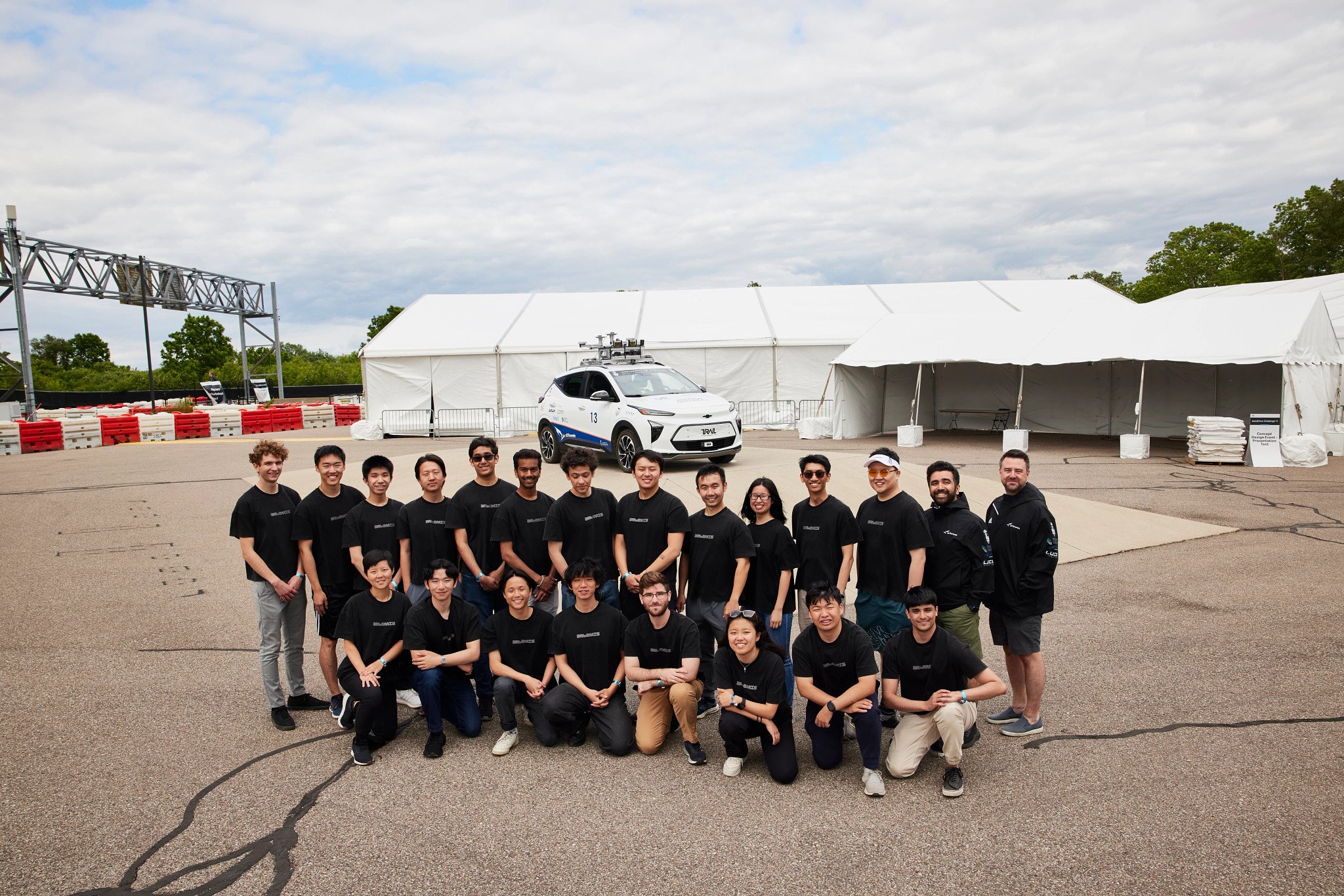U of T Engineering’s self-driving car team, aUToronto, has placed first at the 2024 SAE AutoDrive Challenge™ II. This is the team’s sixth first-place finish in seven years and a return to the top of the podium after placing second in last year’s competition.
Ten teams from universities across the United States and Canada competed at the Mcity Test Facility in Ann Arbor, Mich., from June 4 to 10.
“Through the AutoDrive Challenge, we are preparing the next generation of engineers to head into the industry, to keep pushing towards the challenging goal of reaching Level 4 autonomous driving,” says Professor Tim Barfoot (UTIAS), one of the academic advisors to the aUToronto team.
“The team did another excellent job this year.”
They approached the third year of the competition by going back to first principles to ensure they had a reliable and robust system, says Kelvin Cui (EngSci 2T2 + PEY, UTIAS MASc student), the team’s principal.
Cui joined aUToronto last fall after five years with the University of Toronto Formula Racing team, where he founded the ‘driverless’ division.
“We looked at what was going to get us the most points at competition and made sure that we were not overbuilding our system and adding too much complexity,” he says.
This meant pushing for additional testing time at the University of Toronto Institute for Aerospace Studies (UTIAS) and reaching more than 900 kilometres of system testing before arriving at Mcity.
A partnership with Queen’s University’s AutoDrive team was instrumental to aUToronto’s preparation. The team drove Artemis, their autonomous vehicle, to Kingston, Ont., to assess their system at Queen’s testing facility, which features intersections and electronic streetlights.
“We added radar to our vehicle as a new sensor, so we needed to be aware of all the sensor failure modes,” says Robert Ren (Year 3 EngSci).
“A lot of our testing time went into making sure that including radar didn’t break anything else in our system and that it could handle any sensor failure cases.”
The key advantage of including radar sensors in the perception system is that it can measure the motion of objects directly, which light detection and ranging (LiDAR) sensors can’t do due to its wavelength.
“Radar can help with adverse weather object detections,” adds Ren.
“So, if the vehicle is operating under heavy rain or fog, the LiDAR is going to be limited, but the radio waves from radar can help the vehicle see what objects are in front and what objects are moving. This enables it to make good decisions when driving in uncertain scenarios.”
Since the team added a new sensor to their vehicle, they wanted to account for all sensor failures. So, in an event where both LiDAR and radar sensors fail, the system can still rely on visual cameras to perform object tracking. This made their object tracker much more robust compared to last year when the team experienced sensor failure during a dynamic event.

Brian Cheong (EngSci 2T2 + PEY, UTIAS MASc student) has been a member of aUToronto since 2021, but this year, he took on the role of technical director of the autonomy team, part of a new leadership structure introduced by Cui.
“In the past, it was a lot of work for our team’s principal to keep track of all the systems,” says Cheong.
“So instead of having to work directly with all 15 sub teams, Kelvin created groups of sub teams that we called stacks, and each stack had a director.”
The team’s restructuring and technical innovations paid off, with aUToronto completing its first clean sweep in the AutoDrive Challenge™ II, placing first in all static and dynamic events, including the concept design presentation and intersection challenge.
“The intersection challenge was a big highlight for us. Kelvin and Robert were in the car, and I was on the sidelines watching with the rest of the team,” says Cheong.
“Each time we saw an obstacle — a stop sign, a red light, the railroad bar coming down — and the car reacted by stopping and then continuing, we let out a big cheer or a sigh of relief.
“And then we were all silent as the car approached the final obstacle, which was a deer. We watched as Artemis slowed down to a stop and the deer moved by. Then we screamed and cheered, and we could hear cheering from inside the car.”
“Our success is entirely a team effort,” adds Cui. “It was not smooth sailing before the competition. The only reason we won is because everybody put in so much effort to test our vehicle every day. That’s how we were able to get this reliable system across the line.”
The team is looking to build on their success as they prepare their vehicle for next year’s competition.
“The fourth year of competition is always the most exciting because the capabilities have been built up to the point that it’s quite impressive to see the car driving around,” says Barfoot. “I can’t wait to see that at Mcity next spring.”





